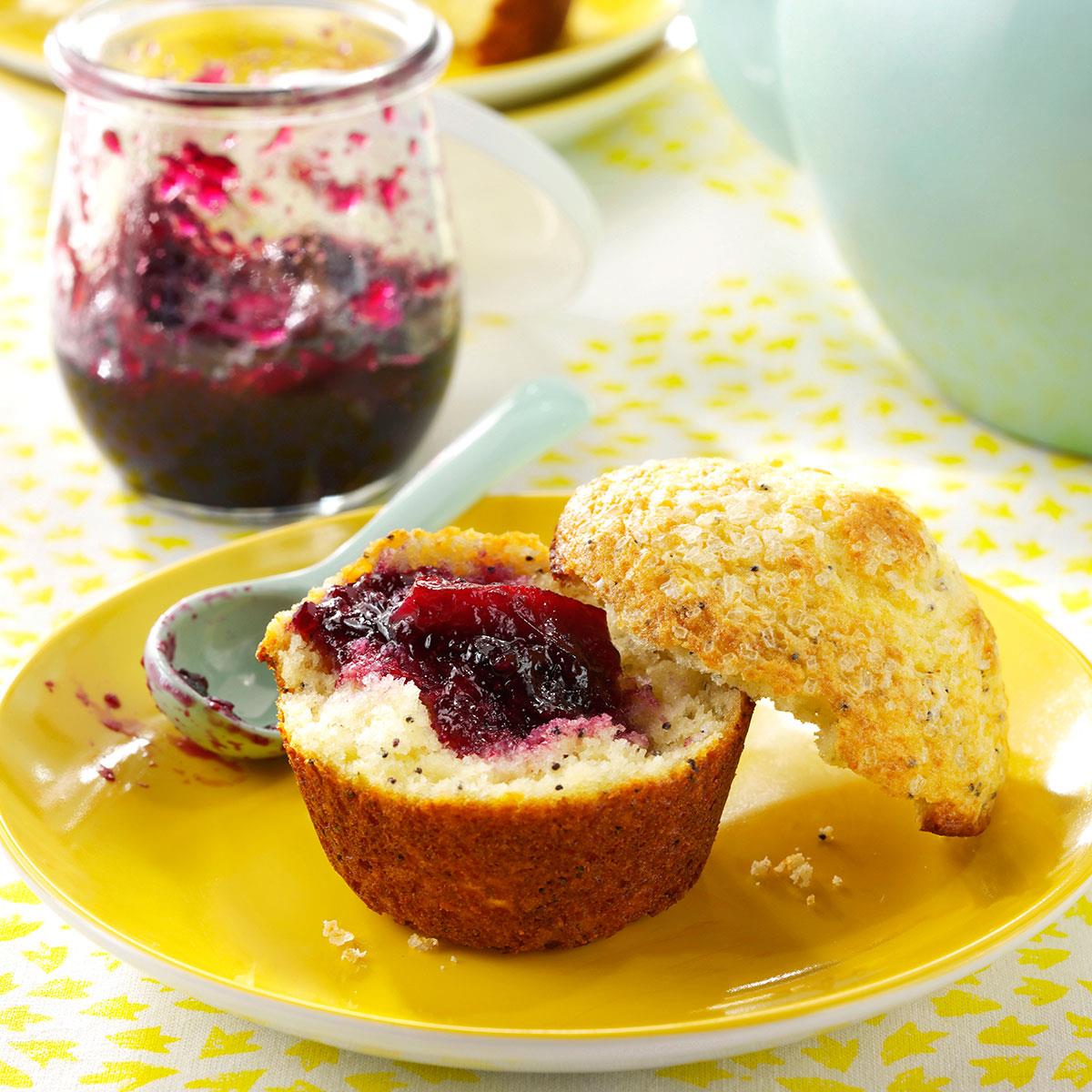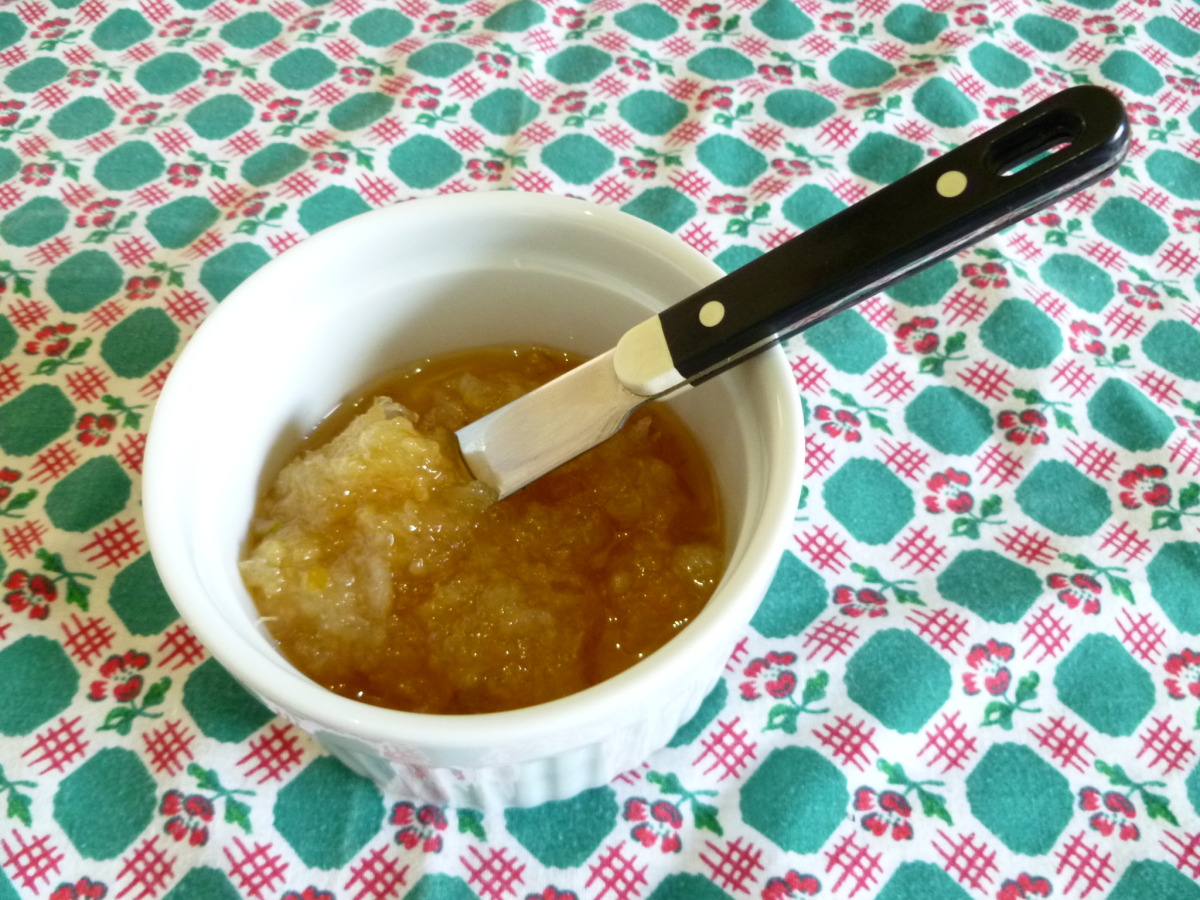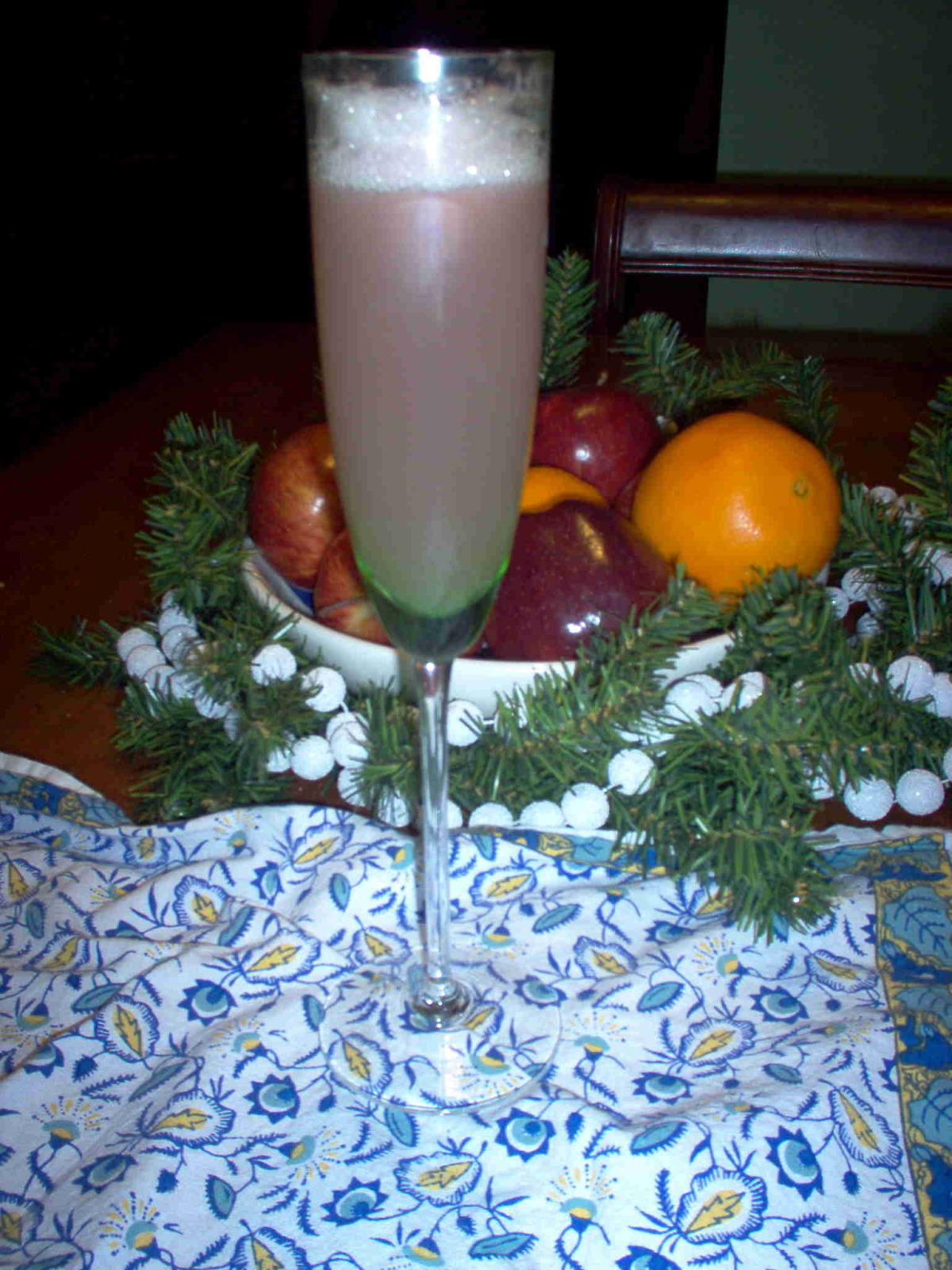Indulge in a delightful culinary journey with our collection of blueberry-infused recipes that capture the essence of summer's bounty. Explore the vibrant flavors of blueberries seamlessly blended with zesty citrus notes, creating a symphony of taste that will tantalize your palate. From the classic Blueberry Crumb Bars to the unique Blueberry and Meyer Lemon Marmalade, each recipe offers a unique twist on this beloved berry. Embark on a culinary adventure as you discover the magic of blueberries like never before. Whether you're a seasoned baker or a novice cook, these recipes are designed to inspire and guide you in creating delectable dishes that will leave a lasting impression on your taste buds.
Check out the recipes below so you can choose the best recipe for yourself!
BLUEBERRY AND MEYER LEMON MARMALADE
I created this recipe by combining a few different recipes, but the main inspiration came from Liana Krissoff and Rachel Saunders. The pectin in this recipe comes from the lemons, which are blanched once to remove some of the bitterness, and then soaked to leach the pectin out of the rinds. You will need to use the cold plate test to determine when the marmalade is finished cooking - I have included instructions on how to do this below. This spread makes a nice change from the usual citrus-only marmalades. It is an old fashioned recipe which takes at least 2 days, due to the soaking. It is not quick, but I feel that the outcome is worth the time spent.
Provided by xtine
Categories Lemon
Time P2DT1h
Yield 6 half pints
Number Of Ingredients 5
Steps:
- Day 1, Morning: Take the 1/2 pound of lemons and cut them into eighths. Place these in a non-reactive saucepan where they will fit snugly in a single layer. Add enough cold water for the fruit to bob freely. Cover tightly and let rest for 8 hours at room temperature.
- Day 1, Afternoon: After 8 hours have passed, bring the pan with the lemon eighths and water to a boil over high heat, then decrease the heat to medium-low. Cook the fruit at a lively simmer, covered, for 2 hours - the lemons will become very soft and the liquid will become slightly syrupy. As the lemons cook, press down on them gently with a spoon every 30 minutes or so, adding a little more water if necessary. The water level should remain consistently high enough for the fruit to remain fully submerged as it cooks.
- When the lemons are finished cooking, strain their juice by pouring the hot fruit and liquid into a fine mesh strainer or jelly bag set over a medium bowl. Cover the whole setup with plastic wrap and let drip overnight at room temperature.
- Meanwhile, prepare the Meyer lemon slices.
- To prepare the Meyer lemon slices: take the pound of Meyer lemons and halve them lengthwise, then cut each half into quarters (each lemon will be cut into 8 pieces at this point). Take each lemon slice and pry out any seeds from it. You can place these seeds in the pot with the lemon eighths and water which is currently simmering - this will add more pectin.
- Slice each Meyer lemon slice thinly crosswise - how thick you slice is a personal preference. I prefer to slice very thinly, making each slice 1/8th of an inch or less. But if you like you could make your slices thicker. I wouldn't recommend going much thicker than 1/4 of an inch.
- Place these Meyer lemon slices (they will look like a lot of little triangles) in a stainless steel pot and cover with water, covering the slices by 1 inch. Bring to a boil over high heat, then decrease the heat to medium and simmer for 5 minutes. Drain, discarding the liquid. Return the lemon slices to the pot and cover with 1 inch of cold water. Bring to a boil over high heat, decrease the heat to medium-low, and cook at a lively simmer, covered, for 20 minutes. As the fruit cooks, stir it gently every 10 minutes or so, adding a little more water if necessary. The water level should stay consistently high enough for the fruit to remain submerged as it cooks. After 20 minutes, remove the pan from the heat, cover tightly, and let rest overnight at room temperature.
- Day 2, Morning: Remove the plastic wrap from the lemon eighths and their liquid and discard the lemons remaining in the strainer or jelly bag. Do not squeeze the bag or press down on the lemons if you want a clear jelly in your marmalade. Set this liquid aside.
- Pour the Meyer lemon slices and their liquid through a fine mesh strainer (or a jelly bag), and let this mixture drip for about 15 minutes. Remove the Meyer lemon slices from the strainer - DO NOT DISCARD - set them aside. Mix the cooked liquid you have strained from the lemon eighths and the Meyer lemons, mixing well, and set aside. You will need 4 1/2 cups of this liquid. If you do not have 4 1/2 cups, add water to the mixture until it equals 4 1/2 cups.
- In a large preserving pan, combine the blueberries with 1 1/2 cups of sugar. I use a potato masher to mash up some of the blueberries, about a third of them, but you don't have to do this. I just feel that it gets the juices flowing quicker. Bring the blueberries and sugar to a simmer, stirring frequently, and then continue to cook until the juices are just deep enough to cover the berries, about 5 minutes.
- Pour the berries into a colander set over a large bowl, and stir the berries gently to drain off the juice. Set the colander of berries on a plate (to catch any remaining juice) and set them aside.
- In a large preserving pan, combine the 4 1/2 cups of mixed liquid from the lemons, the juice from the blueberries, and the Meyer lemon slices. If you do not have a preserving pan, use the widest pan you have. The wider the pan, the more quickly moisture will evaporate from the mixture, and this is what you want when you are making jelly, jam, or marmalade.
- Place 4 saucers or small plates in the freezer. You will use these later to check the set of the marmalade.
- Bring the mixture to a boil over high heat, and cook at a rapid boil over high heat until the mixture is reduced by half, stirring occasionally. It will take about 35 minutes for the mixture to reduce by half.
- Once the mixture is reduced by half, add in the blueberries and any accumulated juice, the strained lemon juice, and the remaining 4 cups sugar, stirring well over high heat to help dissolve the sugar.
- Cook at a boil over high heat, stirring every 2 minutes or so, until the set point is reached. Check the set after 5 minutes of cooking.
- To check the set: take the pot of marmalade off the heat (if you don't remove the marmalade from the heat while you check the set it could over-cook and become rubbery or hard, if the marmalade is indeed already set).
- Place a drop of the marmalade mixture (try to get the "jelly" part of the mixture, avoiding the rind and the berries; I use a 1/4 teaspoon measure to dip out the drop) on one of the saucers you've kept in the freezer, & place the saucer back in the freezer for 1 minute. After 1 minute, take the saucer out of the freezer and nudge the drop of jelly with your finger. If it "wrinkles" when you nudge it with your finger it is done. If the jelly is not set, continue cooking over medium-high heat, checking the set again every 5 minutes.
- I make this marmalade using an 11 quart copper preserving pan, over highest heat on my second largest burner. After the sugar has been added and has dissolved, it usually takes 10 minutes of cooking for the marmalade to reach the set point for me.
- When the marmalade is set, ladle it into sterilized canning jars, leaving 1/4" headspace. Wipe the rims of the jars with damp paper towels to remove any marmalade which got on the rims or the threads. Place the lids and the bands on the jars, just tightening the bands fingertip tight.
- Process in a boiling water bath for 5 minutes, then remove and let sit, undisturbed, for at least 12 hours before checking seals. It is important to let them sit undisturbed for 12 hours because the sealing compound on the lids is still cooling and hardening, completing the seal. While the jars cool, you will hear a "plink" type sound from each jar - this is the jars completing the vacuum seal as the final air escapes the jar. After 12 hours have passed, remove the bands and check the lids - press down in the center of the lid. If you cannot push the lid down any further, the jar is sealed. If the lid "gives" a bit, and you can push it down, the jar did not seal. You can either put the band back on the jar, and reprocess it for another 5 minutes, or you can just put it in the fridge and use it within 3 months.
CITRUS BLUEBERRY MARMALADE

I have four children under the age of six, so berry picking has been the perfect family activity for us. I just started preserving fruit this season with all of the berries we picked-this is a spin-off of a super-easy recipe using ingredients we had on hand, with no added pectin, and it turned out fantastic. It's a favorite for both kids and adults!-Sarah Haengel, Bowie, Maryland
Provided by Taste of Home
Time 1h10m
Yield 5 half-pints.
Number Of Ingredients 6
Steps:
- In a Dutch oven, combine sugar, water, orange, lemon and lime slices; bring to a boil. Reduce heat; simmer, uncovered, 15-20 minutes or until fruit is tender., Add blueberries; increase heat to medium-high. Cook and stir 25-30 minutes or until slightly thickened. , Remove from heat; skim off foam. Ladle hot mixture into five hot half-pint jars, leaving 1/4-in. headspace. Remove air bubbles and adjust headspace, if necessary, by adding hot mixture. Wipe rims. Center lids on jars; screw on bands until fingertip tight., Place jars into canner with simmering water, ensuring that they are completely covered with water. Bring to a boil; process for 10 minutes. Remove jars and cool.
Nutrition Facts :
BEST MEYER LEMON MARMALADE RECIPE (WITH HONEY)

A little sweet... a little tart.... Meyer Lemons are just right for marmalade.
Provided by Renee Pottle
Categories Sweet Spreads
Time 9h15m
Yield 4 - ½ pint jars
Number Of Ingredients 4
Steps:
- Wash lemons. Trim ends.
- Cut lemons into wedges and then thinly slice wedges crosswise.
- Combine lemon slices and water. Let sit 8 hours or overnight.
- Add sugar and honey to lemon mixture.
- Slowly bring mixture to a boil, stirring occasionally.
- Cook rapidly until mixture reaches the gelling point, about 220 degrees. This will take approx. 25 minutes.
- Spoon marmalade into clean, ½ pint jars. Top with two-piece caps.
- Process in a water bath canner for 10 minutes.
MEYER LEMON MARMALADE

I only had a few meyer lemons from my first crop, and I wanted to make the best marmalade. I found this recipe on Simple Recipes and I certainly got the best tasting marmalade I ever tasted. The mixture of the lemon/orange taste really makes this different than the straight orange.Here is the site to review for the pictures, the complete recipe is here without the pictures. http://simplyrecipes.com/recipes/meyer_lemon_marmalade This recipe calls for Meyer lemons, a hybrid of a regular lemon and an orange, that is thinner skinned and sweeter than a regular lemon. You cannot substitute regular lemons for Meyer lemons in this recipe. I followed the recipe, and it came out perfect.
Provided by OneEyeJack
Categories Lemon
Time 2h30m
Yield 6 8-oz jars, 48 serving(s)
Number Of Ingredients 3
Steps:
- Note that the proportion of lemon segments to water to sugar is 1:1:1. So if you don't have a kitchen scale and don't weigh your lemons to begin with, as you proceed through this recipe keep in mind these proportions. Your 2 1/2 lbs of lemons should yield 6 cups of chopped lemon. 6 cups of chopped lemon will be cooked first with 6 cups of water, and then later 6 cups of sugar are added. You can also do this recipe with 4 cups of chopped lemons, 4 cups of water, and 4 cups of sugar. Do not double the recipe. Do not reduce the sugar (if you want a reduced sugar recipe, use a different recipe); the sugar is needed for the jelly to set.
- PREPARING THE FRUIT.
- Scrub the lemons clean. Discard any that are moldy or damaged.
- Prepare the lemons. Cut 1/4 inch off from the ends of the lemons. Working one at a time, stand a lemon on end. Cut the lemon in half lengthwise. Cut each lemon half into several segments, lengthwise. As you cut the lemons into segments, if you can, pull off any exposed membranes. Just get the ones that are easy to get to, ignore the rest. When you've cut down to the final segment, cut away the pithy core. Remove all seeds from the segments. Reserve the seeds and any removed membrane or pith. You will need them to make pectin. Cut each lemon segment crosswise into even pieces to make little triangles of lemon peel and pulp.
- Put all of the seeds, membranes and pith you removed from the lemons into a bag fashioned out of two layers of cheesecloth or a muslin jelly bag.
- FIRST STAGE OF COOKING.
- Place the lemon segments and water into a large, wide pot.
- Place the pectin bag in the pot with the fruit pulp and secure to the pot handle.
- Bring mixture to a medium boil on medium high heat. Let boil, uncovered, for about 25-35 minutes, until the peels are soft and cooked through. Test one of the lemon peel pieces by eating it. It should be soft. If it is still chewy, keep cooking until soft.
- Remove from heat.
- Remove the pectin bag, place the pectin bag in a bowl and let cool until it is comfortable to touch.
- ADD THE PECTIN AND SUGAR.
- Once your pectin bag has cooled to the point you can handle it, if you want, squeeze it like play-doh to extract any extra pectin. This is not necessary but will help ensure a good set. (I like to wear latex-type gloves for this part.) You should be able to get a tablespoon or two more from the bag. It has the consistency of sour cream. Return this pectin to the pan with the lemon mixture.
- Measure out your sugar and add it to the pan with the lemon mixture.
- SECOND STAGE OF COOKING.
- Heat the jelly mixture on medium high and bring it to a rapid boil. Secure a candy thermometer to the side of the pan. The marmalade may take anywhere from 20 to 35 minutes or so to be ready to pour out. After about 15 minutes, start checking it frequently.
- There are two ways to test that the marmalade is ready to pour out into jars - the mixture reaching a temperature of 220-222°F (8-10°F above the boiling point at your altitude) and a bit of it put on a chilled plate "wrinkling up" when you push it with your finger tip. I do both.
- For the wrinkle test, put several small plates into the freezer. As the jelly temperature reaches 218°F, start testing it by placing a small amount of the hot jelly on a chilled plate. If the jelly spreads out and thins immediately, it isn't ready. If it holds its shape a bit, like an egg yolk, that's a good sign. Push up against it with your finger tip. If the jelly sample wrinkles at all, it is time to take the jelly off the heat and pour it out into jars.
- When you use a candy thermometer to test the temperature of your mixture, make sure the probe is NOT touching the bottom of the pan. Make sure that the indentation on the probe (with modern candy thermometers this is about an inch and a half from the bottom of the probe) is actually surrounded by the mixture. This may mean that you have to tilt the pan to one side, to cover the probe sufficiently to get a good reading.
- CANNING.
- While the marmalade is in its second cooking stage, rinse out your canning jars, dry them, and place them, without lids, in a 200°F oven. They should be in the oven at least 10 minutes before using them.
- As the time approaches for the marmalade to be done, boil some water in a tea pot. Put the jar lids in a glass or ceramic bowl and pour the boiling water over them to sterilize.
- Once the jelly has reached 220°F or its "wrinkly" stage, remove the jelly pot from the heat. Carefully ladle the jelly into the jars, one at a time, leaving 1/4 inch head space at the top of the jars for a vacuum seal. Wipe the rim clean with a clean, wet paper towel. Place the lid on the jar, securing with a jar ring. Work quickly.
- Allow the jars to sit overnight. You will hear them make a popping sound as a vacuum seal is created.
- Even if the jelly is not firm as it goes into the jar (it shouldn't be), it should firm up as it cools.
Nutrition Facts : Calories 103.6, Fat 0.1, Sodium 1.6, Carbohydrate 27.2, Fiber 0.7, Sugar 25.5, Protein 0.3
Tips:
- Choose the right lemons: Meyer lemons are ideal for this marmalade because they have a sweeter, less acidic flavor than regular lemons.
- Prepare the lemons properly: Be sure to wash the lemons thoroughly and remove any blemishes. Cut the lemons into thin slices, removing the seeds as you go.
- Use a heavy-bottomed pot: This will help to prevent the marmalade from scorching.
- Cook the marmalade over low heat: This will help to prevent the marmalade from becoming too thick or syrupy.
- Stir the marmalade frequently: This will help to prevent the marmalade from sticking to the pot.
- Test the marmalade for doneness: The marmalade is done when it reaches a temperature of 220 degrees Fahrenheit or when a small amount of marmalade placed on a cold plate wrinkles when pushed with your finger.
- Store the marmalade properly: The marmalade can be stored in a cool, dark place for up to 1 year.
Conclusion:
Blueberry and Meyer lemon marmalade is a delicious and versatile condiment that can be enjoyed on toast, scones, or pancakes. It can also be used as a glaze for chicken or fish, or as a filling for pies and tarts. The bright citrus flavor of the lemons pairs perfectly with the sweet blueberries, making this marmalade a perfect addition to any breakfast or brunch table.
Are you curently on diet or you just want to control your food's nutritions, ingredients? We will help you find recipes by cooking method, nutrition, ingredients...
Check it out »
#time-to-make #course #main-ingredient #cuisine #preparation #occasion #north-american #low-protein #healthy #5-ingredients-or-less #jams-and-preserves #canning #condiments-etc #fruit #american #1-day-or-more #easy #low-fat #dietary #gifts #low-sodium #low-cholesterol #low-saturated-fat #healthy-2 #low-in-something #berries #blueberries #citrus #lemon #technique #water-bath
You'll also love








